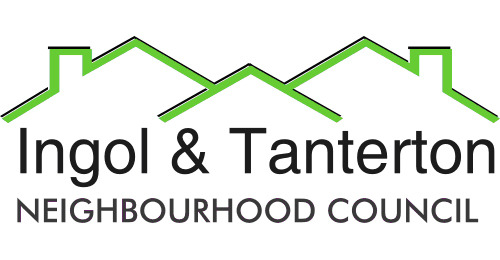Ingol means ‘Inga’s Hollow’, named after a man of Viking descent who built a house on the banks of the Sharoe Brook about a thousand years ago - possibly at this mound, on the left.
The name Tanterton does not appear until the Nineteenth Century, when it referred to a farm house down where Barry Avneue now is!
The Roman Road from Ribchester to Kirkham had earlier crossed Ingol Dip and the brickworks, but it is doubtful if anyone was living here then. The area was a mixture of mossland (peat bogs), moorland and ‘carr’ (wet woodland) when Inga and his descendants began clearing and ploughing fields around where Higher Greenfield, Mayfield and Cantsfield now are. These would have been large Open Fields to begin with, but in the Tudor period they were probably enclosed, and new fields were taken in from Cottam Moor, either for arable or pasture.
History largely passed the area by, and by the middle of the 19th century there were still only 80 people living where 7500 people now live today. It was in the 1830s, though, that Ingol’s Most Famous Resident came to live here, at The Tag, on Tag Lane. George Leo Haydock, of Cottam Hall, was famous for his translation and commentary on the Bible, which came to be used in every Catholic church in England – as well as being used recently for the Inauguration of President Joe Biden.
Ingol’s rural tranquillity came to an end after the publication of Preston’s Development Plan in 1951. The area, which had been in a Rural District, was taken into Preston Borough, and work began in 1962 to build council houses (now Community Gateway) on some 2000 acres of former farmland. Then in the early 1980s, there was a second wave of building, this time in the northern half of the area, which came to be known as Tanterton, a mixture of social housing built by North British Housing (now Places for People), and private housing in Ingol Golf Village, built around the golf course which opened in 1981. The golf course finally closed in 2017, and applications were made for planning permission for houses. Meanwhile, the only other open space left, the brownfield brickworks site, was granted planning approval for housing, and for future commercial development.
For a longer History of Ingol and Tanterton, click here 2022 01 History of Ingol
To find out more about people's memories of Ingol, including a video, go to the Ingol Memories section of the Harris Museum website
Text by Bill Shannon

